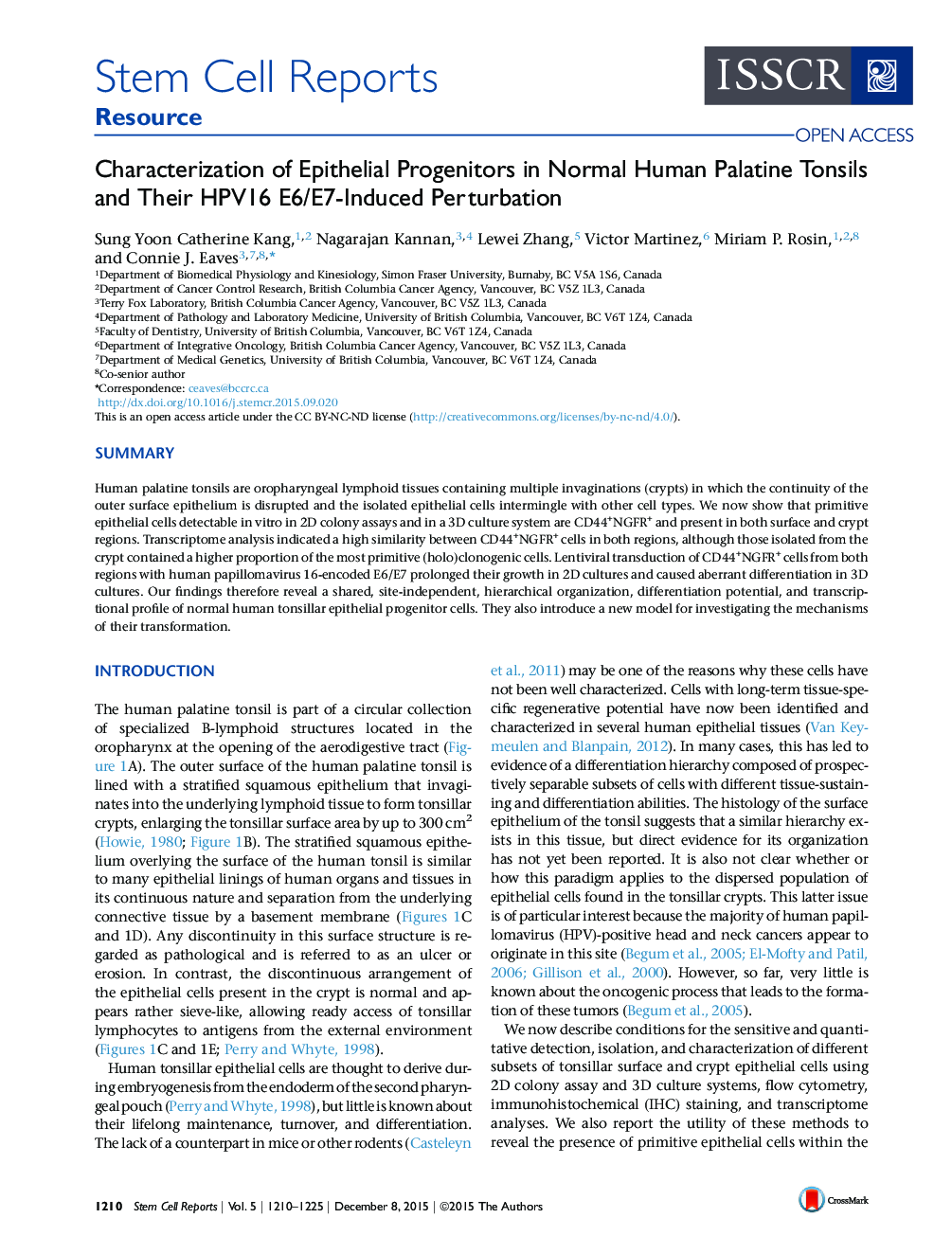| Article ID | Journal | Published Year | Pages | File Type |
|---|---|---|---|---|
| 2093719 | Stem Cell Reports | 2015 | 16 Pages |
•Tonsillar surface and crypt epithelial progenitor cells are detected similarly•Both surface and crypt epithelial progenitors in the tonsil are CD44+NGFR+•Stratified epithelium can be regenerated from primitive tonsillar crypt cells•HPV16 E6/E7 deregulates crypt epithelial progenitor growth and differentiation
SummaryHuman palatine tonsils are oropharyngeal lymphoid tissues containing multiple invaginations (crypts) in which the continuity of the outer surface epithelium is disrupted and the isolated epithelial cells intermingle with other cell types. We now show that primitive epithelial cells detectable in vitro in 2D colony assays and in a 3D culture system are CD44+NGFR+ and present in both surface and crypt regions. Transcriptome analysis indicated a high similarity between CD44+NGFR+ cells in both regions, although those isolated from the crypt contained a higher proportion of the most primitive (holo)clonogenic cells. Lentiviral transduction of CD44+NGFR+ cells from both regions with human papillomavirus 16-encoded E6/E7 prolonged their growth in 2D cultures and caused aberrant differentiation in 3D cultures. Our findings therefore reveal a shared, site-independent, hierarchical organization, differentiation potential, and transcriptional profile of normal human tonsillar epithelial progenitor cells. They also introduce a new model for investigating the mechanisms of their transformation.
Graphical AbstractFigure optionsDownload full-size imageDownload as PowerPoint slide
